OCTOBER 2,
Auction at the heart of Taft Corners
Five acres up for sale following foreclosure
BY JASON STARR Observer staff
Five acres at the intersection of Routes 2 and 2A will be auctioned off Wednesday in a culmination of foreclosure proceedings between TD Bank and landowner Judge Development Corp.
“It will be up to the new owner and those occupants to come to some sort of mutually agreeable terms, if those occupants want to stay.”
Mike Carey Auctioneer
The acreage incorporates three separate parcels, including the 1800s-era “Blair House” that currently houses a preschool and day care, the Texas Roadhouse restaurant and two identical brick office buildings that are home to a variety of businesses.
Foreclosure proceedings began last fall, with TD Bank seeking remedy in Vermont Superior Court for the landowner’s failure to pay roughly $7.4 million owed on the properties, Williston town land records show. Judge Megan Shafritz ruled in favor of
the bank in September and ordered the properties to “be sold as a whole or in separate parcels, to the highest bidder at a public sale.”
Landowner Alex Judge declined to comment.
TD Bank has retained auctioneer Tranzon to conduct the auction. It is scheduled to begin at 1 p.m. Wednesday inside one of the office buildings that are up for bid — together known as the Interstate Corporate Center. Bidders are required to submit a $100,000 deposit to qualify to participate.
Maine-based Tranzon auctioneer Mike Carey has been showing the building to potential bidders in recent weeks, and has marketed the properties nationwide. He expects bidders from throughout the Northeast to participate Wednesday, including “two very strong bidders right from the local area,” he said.
“We’re seeing pretty good interest in these properties,” Carey said. “People certainly seem to see some value in Williston.”
The imminent change in ownership has created uncertainty for the Crockett Academy — a preschool and daycare that opened last year as tenants in the Blair House. Owner Phoenix
Crockett said he’s reached out to potential bidders — including TD Bank, which could choose to retain ownership of the properties — to get ahead of a new lease agreement.
“If it’s any of the major players who win the bid, all of them have already said ‘Nothing’s changing for you. We’ll set a meeting to write up a lease,’” Crockett said. “If it’s not one of



those people, we’ll have to reach out and ask ‘what are the next steps?’”
“If they wanted to get us out, it would take a long time, and we would fight very hard,” he added. “But it definitely is a possibility.”
As a contingency, Crockett has inquired with board members

at the nonprofit Bellweather School that recently closed after 30 years about moving into their space on South Brownell Road.
“I’m in talks right now to either rent or buy (the Bellweather School building),” Crockett said. “That will be where we go if we get in a pickle here.”
Attorney Paula LeBlanc of
An aerial view, above, of the property to be auctioned off Wednesday, Oct. 8, in Taft Corners. The property, three separate parcels, includes two office buildings, the Blair House and the Texas Roadhouse.
The Crockett Academy day care and preschool, left, opened last year in the Blair House at the corner of Routes 2 and 2A. The building is set to change hands during Wednesday’s auction.
the Peet Law Group, one of the office building tenants, said the group plans to stay in the building under new ownership.
“There will be no interruption to our tenancy,” she said. Regus, a co-working company that subleases office and meeting space to individuals and

CORRECTIONS
An article on Page 3 of the Sept. 18 edition of the Observer headlined “When Dawn met Bob” mistakenly said that Ballou Family Apothecary co-founder Bob Phillips blames corporate skincare products for a skin disorder his late daughter suffered from. The story also mistakenly called co-founder Dawn Lancaster’s former company, Carved Solutions, a soap and candle-making company. Carved Solutions is a personalized gift company with a made-inVermont focus.
An item in the Around Town section on Page 2 of the Sept. 25 edition of the Observer headlined “Three-week Mountain View Road closure to start” mistakenly said westbound traffic will be detoured via Old Stage Road. The detour will in fact be routed through North Williston Road.
An article on Page 1 of the Sept. 25 edition of the Observer headlined “Homeless families to vacate former police barracks” mistakenly said that homeless shelter capacity funded through the state’s Housing Opportunity Grant Program has increased in recent years to about 150 families. It should have said that the capacity has increased by 150 households to a total capacity of 645 households.

Turn stress into confidence.
Balancing school, extracurriculars, and responsibilities can feel overwhelming. Our Academic Success Coaching empowers students with tools to manage their workload, reduce stress, and stay on top of deadlines. The result? Greater confidence, independence, and success now and in the future.



Around Town
Mountain View Road partially closed for improvements
Mountain View Road closed to westbound traffic near its intersection with Route 2A on Monday as the road is rebuilt and widened. The closure will remain in effect until Oct. 17.
Eastbound travel will be maintained, but westbound traffic will be detoured through North Williston Road and Route 2.
Fire prevention week focuses on electronic battery safety
The Williston Fire Department is reminding residents about the risks of lithium-ion batteries in homes as part of its recognition of National Fire Prevention Week, Oct. 5-11.
Most modern electronics — smartphones, tablets, power tools and lawn tools, to name a few — are powered by lithium-ion batteries. Most everything that’s rechargeable uses this type of battery.
Lithium-ion batteries can overheat, start a fire or even explode if damaged or not used correctly. Firefighters offer these tips to improve the safety of using these batteries:
Read packaging: Look for a stamp from a nationally recognized testing lab on the packaging and product, which means that it meets safety standards. Products that do not meet safety standards could increase the risk of fire.
Charge devices safely: Always use the cables that came with the product to charge it. Buy new chargers from the manufacturer or that are manufacturer-approved. Charge devices on hard surfaces, not on beds or couches. Don’t overcharge. Unplug the device when it’s fully charged.
Recycle batteries responsibly: Don’t throw lithium-ion batteries in the trash or recycling bins. Take them to a battery recycling location. Visit http://call2recycle.org to find a recycling spot near you.
The Williston Fire Department is hosting an open house at the station on Talcott Road from 10 a.m.-12 p.m. on Oct. 11 as part of Fire Prevention Week.
Learn about subdividing and building accessory dwellings
Homeowners who are considering building secondary homes on their properties (accessory dwelling units) or applying to subdivide land are invited to a presentation from the Williston Housing Committee titled “ADUs and You.”
The event will take place from 6-8 p.m. Oct. 15 at Town Hall. Speakers include local homeowners who have built accessory dwellings and representatives of town and state government.
Spooky celebration on tap at library
The Dorothy Alling Memorial Library and Williston Historical Society are planning a “Haunted Williston” party on Oct. 29 starting at 6:30 p.m. Hear the winning short story from the library’s “Haunted Library” writing contest and see an exclusive showing of a Jim Heltz documentary about Williston’s Griswold House. Costumes are encouraged, and snacks will be provide.
Become a ‘Friend’ of the Richmond library
Fans of the Richmond Free Library are invited to join a fall meeting of the Friends of the Richmond Free Library on Monday, Oct. 6 at 6 p.m. The group is recruiting more volunteers as it looks to become more active in the community.
The meeting, at the library, will include a discussion of the library’s book sale in December and a brainstorm of ideas for other events and fundraisers that the Friends could do to help support the library.
COMMUNITY CALENDAR
EMAIL EVENT LISTINGS TO EDITOR@WILLISTONOBSERVER.COM
THURSDAY, OCTOBER 2
Rotary speaker and breakfast meeting ♦ Zach Bennett, assistant professor at Norwich University, speaks on “The Election of 1860.” 7:15 a.m. at Williston Federated Church and via Zoom. RSVP to RotaryClubofWillistonVT@gmail.com.
FRIDAY, OCT. 3
Education and Enrichment for Everyone series ♦ Vermont rail historian James Jones presents “Vermont’s Island Line Revisited.”
2-3 p.m. Faith United Methodist Church, 899 Dorset Street, South Burlington. More information at https:// eeevermont.org.
SATURDAY, OCTOBER 4
Williston Energy Fair ♦
Meet business representatives and experts in the fields of solar power, home weatherization, heat pumps, electric vehicles, electric bikes, shopping trolleys and more. 1-4 p.m. at Maple Tree Place. Email energy@ willistonvt.org for more information. Williston Woods Annual Bazaar ♦ Craft tables, bake sale, basket raffle, white elephant sale. Lunch. 9 a.m.-3 p.m. 126 Williston Woods Rd.
SUNDAY, OCT. 5
Blessing of the Animals ♦ Bring pets (or photos) to Williston Federated Church’s annual Blessing of the Animals. 3 p.m. Village Community Park.
TUESDAY, OCT. 7
Williston Selectboard meeting. ♦ 7 p.m. Town Hall. Agenda at www.town. williston.vt.us.
Williston Planning Commission meeting ♦ 7 p.m. Town Hall. Agenda at www.town.williston.vt.us.
Outright Vermont hosts final Fire Truck Pull
‘We are ready to pivot to what comes next’
BY ROBIN OLSEN Community News Service
Outright Vermont hosted its signature Fire Truck Pull for the last time on Saturday in Burlington, raising more than $250,000 for LGBTQ youth programs.
The Fire Truck Pull is Outright Vermont’s annual fundraising event and block party. Teams dress in costumes and race to pull a fire truck down Church Street. All the money raised goes to support Outright Vermont’s programs for LGBTQ youth. The event started in 2005.
“The idea was to bring folks together, peer-to-peer, to share about the importance of ‘pulling’ for LGBTQ youth,” said Outright Vermont executive director Dana Kaplan. “And to do it in a fun, community-based way, with incredible outfits and all the queer joy.”
Outright Vermont announced in May that it planned to retire the event after this year to focus on other priorities. Its goal was to make the last pull the biggest one yet — and it was. The event exceeded its fundraising goal by more than $50,000, and a record number of teams — more than two dozen — participated. Many teams represented Vermont businesses, including CrossFit Burlington, Darn Tough, Hula and Rhino Foods.
The team that fundraised the most money was Team
Transparent. The team has been competing in the Fire Truck Pull for a decade. This year, its members raised more than $45,000.
“Team Transparent is made up of parents of trans or nonbinary youth that have come together through Outright to learn how to best support their kids,” said team captain Timna Dulmer. “This is one of my favorite events of the whole year, to fundraise for such an amazing organization, and also to have all of these kids know how much we’re pulling for them, and that we will never stop fighting for them.”
First-time Fire Truck Pull participant Christie Gordon joined a team of nurses from the University of Vermont Medical Center.
“We see a lot of people in the worst times of their life in the hospital,” she said. “So I think it’s really great when we can be out supporting people during the best times of their life too, and support them in celebrating who they are.”
Fourteen-year-old Sage Bernhardt was one of the event’s youth judges. They helped pick the winners of event awards like “Best Costumes” and “Fan Favorite.”
“I didn’t even have a favorite team,” Sage said. “In my mind, they’re all top. They all deserve a trophy.”
Sage is involved with Outright Vermont’s Friday Night Group, a drop-in social group for LGBTQ teens that has met weekly since Outright Vermont began in 1989.
“In the Friday Night group, you can just drop in, there’s food,







and you get to hang out and meet a bunch of new people,” Sage said. “It’s a safe community where you can actually be yourself and you won’t get judged. It’s really been an awesome experience for me so far there.”
Kaplan says Outright Vermont is sunsetting the Fire Truck Pull so it can prioritize other fundraising efforts and events that better reflect
what youth want. A major focus for the organization is its recent purchase of Camp Sunrise, a 146acre parcel of land in Addison and Rutland counties that will become the permanent home of Outright Vermont’s summer camp for LGBTQ and allied youth.
“As an organization that works alongside LGBTQ youth, we understand the importance of
knowing when it’s time to change and to grow into the next version of yourself,” Kaplan said. “This event has been incredible, and it has served its time. We are ready to pivot to what comes next.”
Via Community News Service, a University of Vermont journalism internship, in partnership with Vermont Public.

Vermont joins lawsuit against new restrictions on federal aid
BY OLIVIA GIEGER VTDigger
Vermont is among a dozen states pushing back against new restrictions placed by the U.S. Department of Homeland Security on emergency preparedness grant funding. The states facing the funding restrictions had all refused to allocate law enforcement resources for federal immigration activities.
State Attorney General Charity Clark joined her latest lawsuit Monday against President Donald Trump’s administration, calling the new rules and grant allocations unconstitutional. Attorneys general from 11 other states, including Rhode Island, Massachusetts and New York, are also participating in the lawsuit. The lawsuit specifically names Homeland Security Secretary Kristi Noem and top Federal Emergency
Management Agency official David Richardson, both in their official capacity.
At issue in the lawsuit are two grant programs run by the Federal Emergency Management Agency, one targeting homeland security, the other emergency preparedness. The former, the Homeland Security Grant Program, is FEMA’s largest grant program, allocating nearly $1 billion to states and municipalities each year.
FEMA had previously notified the 12 states that they would receive $459 million through the Homeland Security program, according to a press release from Clark’s office. But on Saturday, the states were collectively awarded $226 million — a more than 50 percent reduction of what the states were promised. The administration also cut the period of time that all states are allowed to spend the allocated funds


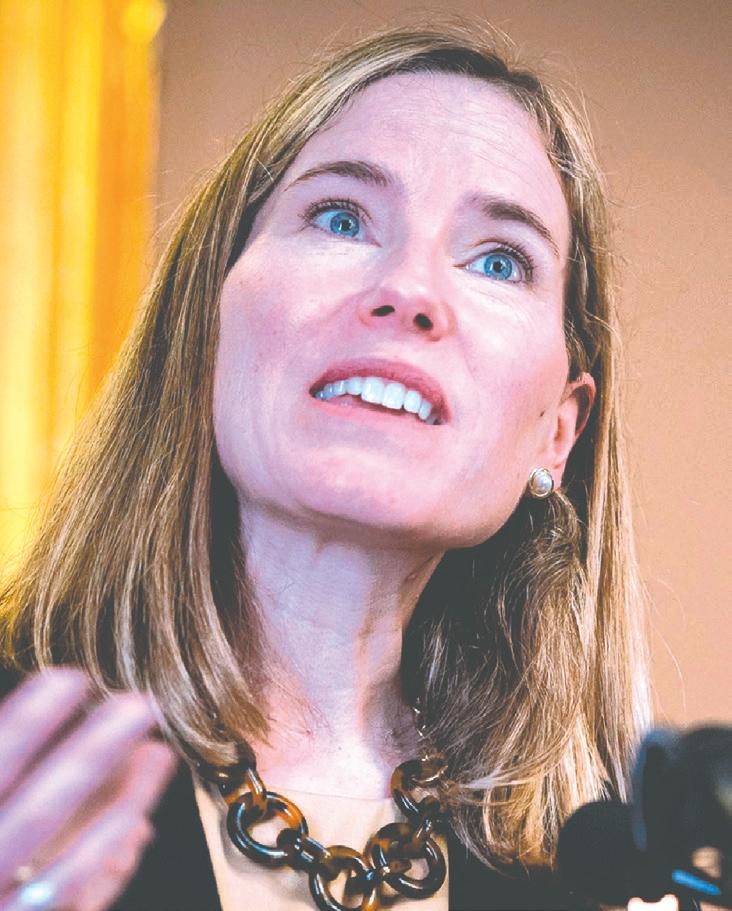
from three years to one.
A FEMA press release announcing the reduced funding on Monday said, “Recipients of grants will no longer be permitted to use federal funds to house illegal immigrants at luxury hotels, fund climate change pet projects, or empower radical organizations with unseemly ties that don’t serve the interest of the American people.”
Vermont received all of its previously allocated funds, but now will have only one year to put them to use. The large majority of the federal grant money is awarded by the state to municipal subgrantees such as towns or water districts, which are often on different budgetary timelines. The shortened timeframe could pose significant hurdles





Federal Aid
continued from page 4
to the funds’ implementation, the Attorney General’s Office said.
Vermont receives approximately $4.5 million through the Homeland Security Grant Program and approximately $2.75 million through the Emergency Management Performance Grant, according to the Attorney General’s Office.
“The Trump Administration is trying to unlawfully reallocate federal homeland security funding based on a state’s willingness to comply with the Administration’s political agenda,” Clark wrote in a press release.
“But under the Constitution, it is Congress — not the President — who has the power of the purse,” she added. “This reallocation also
Auction
businesses, also operates out of the office buildings. The buildings are “mostly vacant,” however, according to a property description from Tranzon.
Combined, they total 81,000 square feet.
“There are some occupants in the building at the moment,” Carey said. “It will be
“The Trump Administration is trying to unlawfully reallocate federal homeland security funding based on a state’s willingness to comply with the Administration’s political agenda.”
Charity Clark
Vermont Attorney General
includes an unlawful attempt at drastically shortening the timeframe during which funds must be spent, effectively setting states on a
up to the new owner and those occupants to come to some sort of mutually agreeable terms, if those occupants want to stay.”
The Texas Roadhouse is the only business on the properties whose lease will not be affected by the sale. The restaurant’s lease incorporates the property on which its building sits — a “ground lease” that was originally signed with Judge Development in 2007 and runs through 2028.
“Any acquiring party of the premises

race against time to use the funds before one year is up.”
Vermont Emergency Management oversees the implementation of the grant funding in the state. In an email, Vermont Emergency Management spokesperson Mark Bosma relayed a message from the homeland security unit of the department, saying, “They are in the process of evaluating the award conditions for this grant, so it would be premature for them to discuss it.”
Vermont has refused to use its law enforcement to assist in the federal government’s aggressive immigration crackdown. Gov. Phil Scott twice declined to send the Vermont National Guard to assist the Trump administration this summer. The first request was explicitly to assist the U.S. Immigration and Customs Enforcement in its work. Also, Vermont law forbids local and state law
… (is) subject to the terms and conditions of the (Texas Roadhouse) lease, including, without limitation, the right of the tenant to possession and occupancy,” Judge Shafritz wrote in her September judgement.
In other words: “You can’t kick the steakhouse out of their building,” Carey explained. “Their lease survives the foreclosure.”
Tranzon describes the properties as “a rare four-property opportunity in the
enforcement agencies from participating in federal immigration enforcement actions. State lawmakers went even further to tighten the statute earlier this year.
The lawsuit argues that cutting congressionally allocated funding for political aims — such as punishing states that are not assisting the Trump administration in its immigration enforcement activities — is in stark violation of the Constitution.
The changes made to the grant awards and timeframe also violate the Administrative Procedure Act, a statute that lays out specific protocols federal agencies must follow when changing regulations or programs, the lawsuit said. The law essentially aims to establish best practices in regulations and prevent this kind of political whim from dictating agency actions, as legal experts have outlined.
heart of Williston’s Taft Corners commercial hub.”
“Williston’s Taft Corners has been the focus of major residential and mixed-use growth, reinforcing its role as a regional commercial destination,” it continues. “This sale offers the opportunity to acquire the entire portfolio with both cash-flowing properties and redevelopment upside in one of Vermont’s most dynamic markets.”







Ignoring hunger won’t make it disappear
BY ANORE HORTON
The recent decision by the U.S. Department of Agriculture to cancel the “Household Food Security in the United States” report is unacceptable. This annual survey has, for nearly three decades, measured food insecurity across the country, and served as an important way to acknowledge and respond to the reality that the injustice of hunger impacts millions in our nation.
This abrupt announcement comes on the heels of devastating funding cuts and eligibility changes to SNAP, passed by Congressional leaders in July. SNAP, known in Vermont as 3SquaresVT, helps tens of thousands of Vermonters — and millions across the U.S. — afford groceries and put food on the table. Now, leadership in Washington is dismantling the tools we use to measure hunger.
It seems clear that the federal administration intends to try to justify its historic funding cuts and eligibility changes to our nation’s most effective anti-hunger
program by making hunger invisible. But deliberately and systematically causing hunger for millions of our family members, neighbors and friends cannot be justified, ever.
SNAP is a proven program to lift people out of poverty, and reduce the risk of hunger. Yet, Congressional leaders passed a law to make it harder for low-income people to tap into SNAP. Among the harmful changes is eliminating eligibility for many immigrant groups, which will impact as many as 1,600 Vermonters. Further, their decision to expand existing work reporting requirements — which ignores systemic barriers in the labor market and does nothing to create good, consistent jobs or provide affordable, accessible transportation and childcare — will risk benefits for as many as 7,700 Vermonters. Because the U.S. Department of Agriculture (USDA) has consistently tracked food insecurity data for decades, we know for a fact that expanding SNAP benefits, as Congress did during the Covid-19 pandemic, reduces hunger and
Leadership in Washington is dismantling the tools we use to measure hunger.
food insecurity. And we know that these new and drastic cuts to SNAP mean people will lose vital grocery money, be forced to make impossible choices, and fall away from food security.
More people will go hungry because of Congressional Leaders’ decision in July to slash SNAP. We all know it, and decades of data show it. Collectively, we must not permit Congressional leadership and the federal administration to avoid the consequences of their harmful policy choices by erasing a key national
measurement of hunger.
For advocates and organizations that work to support Vermonters in meeting their basic needs, we know that you can’t just delete data reports to solve a problem. Partners across Vermont that support food security efforts are seeing longer lines at food shelves. We are hearing that parents are skipping meals so their kids can eat, and that immigrant community members are facing barriers that leave them experiencing increased food insecurity and isolation.
The reality of hunger doesn’t disappear when you stop measuring it. What does become more challenging is confronting these realities with data-backed decision-making and the possibility of holding policymakers accountable. Without data, we lose the ability to measure meaningful progress, track need and ensure

ADVERTISING
Rick Cote, Associate
rick@willistonobserver.com 802-373-2136
EDITOR
Jason Starr
editor@willistonobserver.com
PRODUCTION &
Jan Kenney
jan@willistonobserver.com
PUBLISHER
Susan T. Cote
susan@willistonobserver.com
BILLING
Michael McCaffrey
office@willistonobserver.com
Member:
policymakers have the insights they need to keep our communities healthy and strong.
We call on the USDA to change course and restore the annual “Household Food Security in the United States” report. And while we continue to push for accountability from the current administration, we all must demand that our state and local governments continue to protect and strengthen programs that keep food on the table for our neighbors.
Hunger will not vanish by ignoring it. Vermont has always been a leader in food security, and now, with federal support and accountability shrinking, we need our state to step up to ensure the best outcomes for all of us who live here.
Anore Horton is the executive director of Hunger Free Vermont. She lives in Williston.


A challenge posed: Build better (not bigger)
BY JOHN BOSSANGE
Recently the Vermont Chamber of Commerce hosted a conference in Burlington titled “Vermont Solutions Summit: Actionable Economic Strategies.” The program focused on workforce growth, housing expansion and community revitalization.
Kevin Chu from the Vermont Futures Project was a keynote speaker and presented four “Myth Busters” slides, attempting to “debunk common myths and equip audience members with data to become ambassadors for growth.”
Everything written on his slides is true and reflects the beliefs of Better (not Bigger) Vermont, except for the one word: “myth.”
— Vermont Futures’ “myth” No. 1: “Population and housing growth is going to turn Vermont into New Jersey while ruining our rural character and small-town feel.”
Almost no one sitting in a
weekday traffic jam leaving the Burlington area could be faulted for shouting at their dashboard, “What is this? New Jersey?”
South Burlington and Williston are ground zero for the housing push, and exits 12, 13, 14 and 15 have the eerie look of a New Jersey exit. Taft Corners in Williston, Route 2 in Winooski and South Burlington, Route 15 in Essex Junction and beyond are filled with sprawling subdivisions, mega stores, malls and terrible traffic congestion.
Our quality of life in those places has been diminished. Other rural roads and highways in Vermont around cities and towns like Rutland, Barre, St. Johnsbury, Manchester and Brattleboro, are well on their way to what is experienced in Chittenden County.
The rural character of our state in these areas and in many other towns is being destroyed by sprawl, and have certainly lost their smalltown feel. Why not be honest and tell Vermonters that the loss of our
Calling the statements myths… is their attempt to bury the truth… They are the uncomfortable truths that reflect our beliefs and those of many other environmental and civic organizations today.
small-town rural character is the price you believe we must pay for economic growth and development? Stop selling the lie that growing the population and building more homes will not have an impact.

ENERGY FAIR
SATURDAY, OCT. 4, 1-4 P.M.

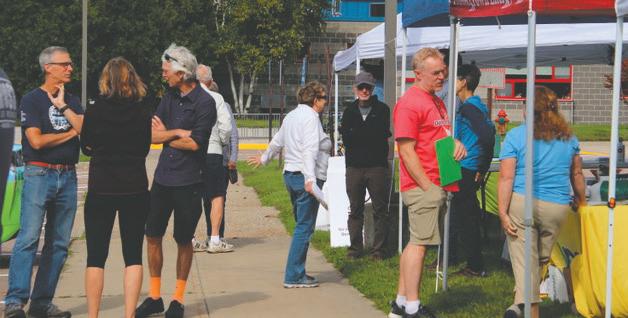
Energy experts available to discuss costs, timelines and incentives for energy efficiency projects. Get information on weatherization, solar, heat pumps, home appliances and much more to help you start saving energy and money!
Talk to owners of the EV makes and models on display about their experiences.
Free Entry with Parking Courtesy of Shaw’s Supermarket and Maple Tree Place
— Vermont Futures’ “myth” No. 2: “Vermont doesn’t have the ‘carrying capacity’ for more people. It will overburden the state and increase costs.”
No one enjoys paying their taxes, especially those who are paying for the new and extended “carrying costs,” reflected in recent property tax bills. All year-round Vermonters who pay taxes for new sewer and stormwater systems, fresh water lines, wastewater treatment plants, additional road maintenance projects, expanded police and fire services, more public works machinery and personnel, and of course, additional classrooms and teachers for new students know it all cost money, and lots of it. It’s been long proven that growing the grand list and impact fees never come close to covering the long-term impacts of “carrying costs” on resident taxpayers.
Why not be honest with Vermonters and tell us this is the price and burden we will need to pay for more people living in our
communities? Stop selling the lie that there will be no burden or increase in our property tax bills.
— Vermont Futures’ “myth” No. 3: “Vermont’s population is not growing, so we don’t need more homes. Building new housing will increase costs for Vermonters while benefiting developers and out-of-staters.”
Vermont’s population has been growing very slowly during the past ten years. The weather is too harsh for many, and the cost of living here is more than in many cities and urban centers south of Vermont.
For that reason, families have not moved here. Complicating this is the greed from developers who continue to build homes and condos in Chittenden County ranging in price from $600,000 to $1,200,000. In 2024, the state saw an increase of 38 percent in out-of-state real estate investors. Over 58,000 homes in Vermont are now either unoccupied, see BOSSANGE page 9
WILLISTON HOUSING COMMITTEE PRESENTS:
Learn how accessory dwelling units (ADUs) and small lot subdivisions can provide critically needed infill housing in Williston. Maybe an ADU is a good fit for your own property! Hear from homeowners, then hear from regulatory officials about how to make it happen.
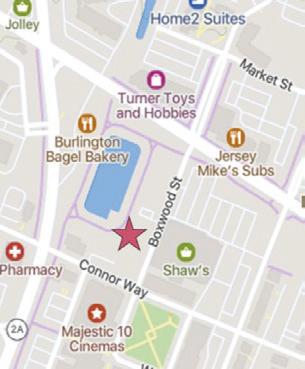


Local homeowners who‘ve built ADUs Alex Farrell, Vermont Department of Housing & Community Development Planning Staff, Town of Williston Featuring: October 15th 6:00 - 8:00 p.m. Williston Town Hall Doors open at 5:30. Refreshments provided.
Catholic bankruptcy case spawns $1.5 million in legal bills — and counting
BY KEVIN O’CONNOR VTDigger
A year after seeking to reorganize its depleting finances in U.S. Bankruptcy Court, the Vermont Roman Catholic Diocese is struggling to cover about $1.5 million and counting in related legal bills.
Under federal law, an institution requesting Chapter 11 protection must pay attorney fees not only for itself but also for officially recognized creditors — which, in the diocese’s case, includes more than 100 claimants alleging sexual abuse by clergy.
The state’s largest religious denomination filed for bankruptcy on Sept. 30, 2024, after a series of misconduct settlements reduced its assets by half, to about $35 million. Since then, the diocese has spent almost 5 percent of its remaining money on legal bills, forcing it to cut the

workweek for staff at its South Burlington headquarters to 30 hours.
“We also have encouraged employees to seek other possible employment opportunities because we cannot guarantee any position at this time,” Vermont Catholic Bishop John McDermott wrote in a letter to parishioners.
The church and creditors are aiming to mediate a preliminary plan by Dec. 31. But the diocese already “has exhausted its unrestricted investments” and is paying for its operating expenses and bankruptcy case with the $3 million gleaned each year from an annual bishop’s appeal and a tax on the income of its 63 parishes, McDermott wrote.
The diocese has paid $582,932 for its bankruptcy lawyers as of Aug. 31, court records show. The Minnesota-based firm of Fredrikson & Byron, which specializes in business law, has received $491,999. As local

support, Burlington’s Dinse firm has received $47,369 and Bethel lawyer Raymond Obuchowski has received $43,563.
The church has paid out even more — a total of $843,089 as of July 31 — for the legal fees of three groups who represent abuse claimants and their Official Committee of Unsecured Creditors. The national law firm of Pachulski Stang Ziehl & Jones has received $564,670, the California-based Berkeley Research Group has received $257,140 and the New York state law firm of Lemery Greisler has received $21,278, records show.
When filing for bankruptcy a year ago, the church said it had no choice in joining 40 other U.S. Catholic entities who’ve sought Chapter 11 protection. The Vermont diocese had paid $34.5 million to settle 67 clergy misconduct lawsuits yet still faces 118 more claims dating as far back as 1950.
Going to court hasn’t been cheap. As the church’s chief counsel, Fredrikson & Byron is charging $235 an hour for a paralegal, $485 an hour for an associate and between $565 and $975 an hour for a lawyer, records show.
Pachulski Stang Ziehl & Jones, acting as lead attorneys for the creditors committee, usually charges as much as $2,250 an hour for a lawyer, but “for the entirety of 2025, the firm will continue to cap its rate for attorneys working on the case at $950 per hour,” a court filing stated.
Vermont Bankruptcy Court Judge Heather Cooper, who must approve all legal fees, has tried to cut costs. She asked the creditors’ counsel to reduce its first quarter expenses by $4,208 after noticing the firm had incorrectly sought compensation for its online legal research platform. But all involved know legal bills can add up. In an extreme
example, the Roman Catholic Diocese of Rockville Centre on Long Island, New York, reported $70 million in attorney fees over four years before reaching a record $323 million bankruptcy court settlement last December.
Under the Chapter 11 process, the Vermont church must present the court with a tally of its assets and liabilities. A judge then will decide whether to allow it to develop a reorganization plan that would require approval from both the court and creditors.
Vermont abuse claimants are seeking church records detailing the diocese’s assets, including a reported $35 million tied to its headquarters and state-level holdings, and all local operations it oversees, starting with 63 parishes with an estimated collective worth of $500 million. The findings are expected to spark future court debate on which assets can be used to compensate creditors.












































































































BETA Technologies files to go public
BY THEO WELLS-SPACKMAN VTDigger
BETA Technologies filed for an initial public offering on Monday morning, after reports of the move circulated last week.
The South Burlington-based company plans to list its stock on the New York Stock Exchange “as soon as practicable” under the symbol “BETA,” according to Monday’s filing with the U.S. Securities and Exchange Commission.
The electric and hybrid aircraft company has raised more than $1.5 billion in capital through private equity investment and development contracts since its founding in 2017. The company opened a 188,500-square-foot production facility in South Burlington in 2023 and runs a battery testing site in St. Albans.
“Electric aviation is inevitable,” founding CEO Kyle Clark wrote in a letter within the filing. “We believe it will lower the cost of flight, improve safety, expand aviation’s utility, and do so in balance with our
environment.”
Monday’s filing comes just weeks after the company announced a high-profile partnership with GE Aerospace, which plans to make a $300 million equity investment in BETA.
The filing’s primary underwriters, taking on the financial risk of the offering, are Morgan Stanley and Goldman Sachs.
BETA will join a small handful of Vermont companies that are publicly traded, the largest of which is Casella Waste Systems.
In the growing electric flight industry, several of BETA’s direct competitors have already gone public, including Archer Aviation and Joby Aviation.
“We are redefining the aerospace industry,” the company said in a statement in its filing, adding that in addition to a strong presence in North America, it is “well positioned to expand globally.”
The company is in an enforced “quiet period” following its filing Monday and declined to comment.
In print and online: we’re your neighbors, committed to keeping you informed on what’s going on in Williston.
Bossange
continued from page 7
are rentals or are occupied for less than half the year by out-of-staters. Out-of-staters are the only people who can afford to purchase homes priced on the open market.
Why not be honest with Vermonters and leaders in the business community? Tell us that constructing moderately priced, affordable homes for those already here and for those looking to relocate and work here will not happen because it is not profitable enough. Stop selling the lie that new homes will attract more people.
— Vermont Futures’ “myth” No. 4: “Growth and Development are a threat to Vermont’s environment and beauty.”
Vermont’s greatest asset is its environment and beauty. It’s what drives our largest industry — tourism. There is no beauty in Taft Corners or surrounding the major exits along the Interstate and along overdeveloped major road corridors that take tourists into our mountains and lakes.
Visitors can get that experience in New Jersey.
In addition to the loss of natural beauty is the disastrous loss of natural lands, open spaces, meadows, wetlands and forested areas that we desperately need to combat the climate crisis. These undeveloped lands provide a variety
of climate mitigation benefits that are critical to maintaining our clean water, clear air and unpolluted soil.
Why not be honest with Vermonters, our environmental agencies and the captains of our tourism industry? Tell them that our environment and beauty, the signature assets of our state, will need to be sacrificed in the name of economic growth, and that you want to create a new image for Vermont as a place for businesses to grow.
Stop selling the lie that development will not threaten the environment and our tourism industry.
The Vermont Futures Project’s mission has never addressed economic sustainability. Instead, the organization continues to promote their own myths of population, housing and workforce growth.
Calling the statements above “myths” is their attempt to bury the truth. They are not myths. They are the uncomfortable truths that reflect our beliefs and those of many other environmental and civic organizations today.
John Bossange is president of Better (not Bigger) Vermont, a nonprofit that promotes an ecologically sound economy and the need to balance human population and consumption with the region’s limited resources. Visit https://www. betternotbiggervt.org for more information.



School redistricting task force reviews first draft map
BY COREY MCDONALD VTDigger
The school redistricting task force, now at its halfway mark, began its review of a draft map for the first time Monday since launching in August. The group is tasked with proposing up to three possibilities to the Legislature by Dec. 1.
During the task force’s fourth meeting on Monday, Sen. Scott Beck, R-Caledonia, and Dave Wolk proposed a map of 14 school districts that nearly mirror the state’s 15 career and technical education regions, each identified by the technical education center that anchors it.
One of the hypothetical school districts would combine the boundaries of two service regions in northwest Vermont, those encompassing Cold Hollow Career Center in Enosburg and Northwest Career & Technical Center in St. Albans.
Wolk is Gov. Phil Scott’s appointee to the board. He is a former state senator and the longtime president of Castleton University. Beck works as a classroom teacher at St. Johnsbury Academy, a private school that operates a center for career and technical education.
Prepared with the help of Agency of
“We’re going to build this foundation in three more meetings, that we’re going to build a whole house on, and it’s going to serve the children of this state for decades? I’m sorry, I feel a lot of pressure to get it right.”
Jay Badams
School Redistricting Task Force
Education officials, the proposal would create districts that “span a greater variety of communities” and that “eliminates artificial barriers to ensure that students have the same opportunities to succeed, regardless of where they live,” the proposal reads.
During the meeting, Beck called it a “rough-edged proposal,” telling fellow task force members that the goal was to put the proposal forward to jumpstart the process.
“There’s a whole bunch of different decision points, a whole bunch of different things to consider,” Beck said. “This is a first pass at what something like this might look like.”
‘RUNNING OUT OF TIME’
The school redistricting task force is confronting a gargantuan task under a tight timeline. The 11-member task force, made up of legislators, former superintendents and other experts, was created under Act 73 to craft new school district boundaries for Vermont’s public education system in time for next year’s legislative session, which starts in early January.
The goal is to create three map configurations to consolidate the state’s existing 119 school districts — currently contained within the 52 supervisory districts or supervisory unions — into anywhere from 10 to 25 future districts.
But with four meetings left, and a Dec. 1 deadline to submit those three maps
to the Legislature, task force members on Monday said they were feeling the pressure.
“We’re running out of time to put out ideas,” said Rep. Rebecca Holcombe, D-Windsor Orange-2, a member of the task force.
Much of the state’s public education system is feeling the anxiety as well.
Jay Badams, a former superintendent and a task force member, cautioned the board that they “need to be super sensitive to the fact that we’re creating huge public anxiety around this.”
“And it’s because we’ve got this deadline,” he said. “We’re going to build this foundation in three more meetings, that we’re going to build a whole house on, and it’s going to serve the children of this state for decades? I’m sorry, I feel a lot of pressure to get it right.”
Rep. Edye Graning, the co-chair of the task force, addressed the “frustration and



Redistricting
concern that is bubbling up in every single community across the state” as education leaders wait on the task force’s work.
“I really want to reassure the public and reassure everyone here that we are working really hard to get up to three maps that will work for the state,” she said. “It takes time, it takes a lot of effort, and the work that we do, we hope the Legislature will take very seriously and use in its work over the next session.”
‘ELEPHANT IN THE ROOM’
Task force members appeared sympathetic to using career and technical education regions as the organizing principle behind at least one of their map proposals, though many questions remain unanswered.
The proposal was “still very much in its early stages,” Toren Ballard, the communications and policy director with the Agency of Education, said at the meeting.
For one, that map, as presented, would be lopsided, with the Burlington Technical Center and the Center for Technology in Essex representing one district with more than 22,000 students.
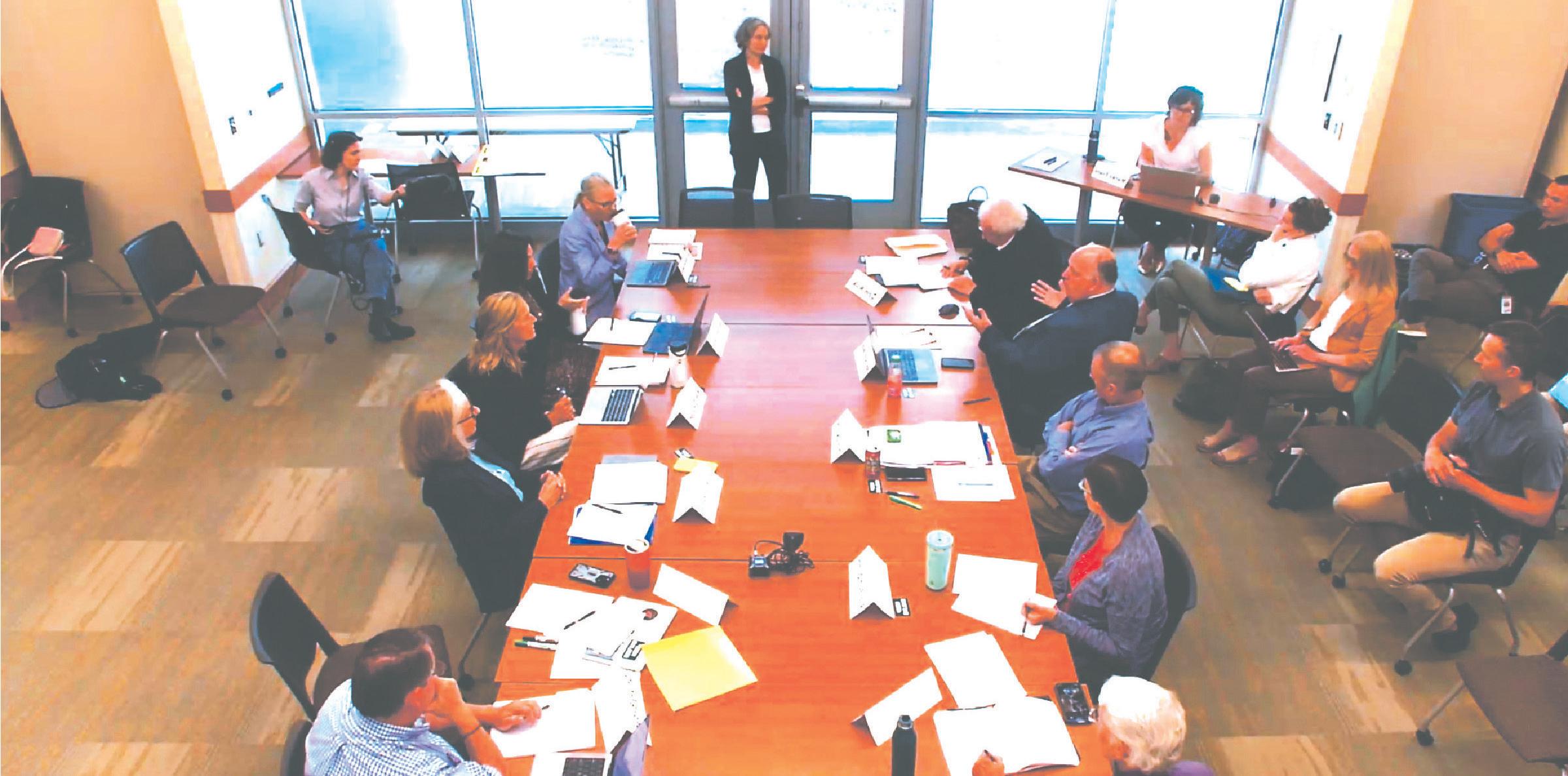
The second largest district, home to the Stafford Technical Center in Rutland City, would have more than 7,000 students. Nine districts, Stafford included, would have between 4,000 and 8,000 students, as suggested in Act 73’s language. Five districts would fall below the 4,000 threshold, with the lowest student count in a district anchored by Bradford’s River Bend Career and Technical Center, with just over 2,000 students.
Another unanswered question — the “elephant in the room,” as task force member Jennifer
Botzojorns put it — was the question of how these hypothetical districts would be governed. Specifically, which district governance model would be used, supervisory districts or supervisory unions.
Supervisory unions and supervisory districts both provide back office functions such as accounting and payroll and may oversee the provision of special education services and curriculum coordination. But the two systems differ in their structure: supervisory unions are made up of school districts that each have
The bare facts…
their own board of directors, while supervisory districts have only one governing board.
“I think that that needs to be encapsulated in our drawing of maps and moving forward,” Botzojorns, a retired superintendent for the Kingdom East School District, said.
In addition to continuing work on the career and technical education draft map, task force members on Monday agreed to propose a map at a future meeting that centered on existing county boundaries, and another that centers on establishing comprehensive, regional
high schools.
Sen. Martine Gulick, D-Chittenden Central, a co-chair of the task force, said whatever plan they put forward for regional high schools “has to include some kind of construction aid.”
“It has to look that idea and that problem in the face,” she said. “We cannot ignore it anymore.”
Task force members also agreed to work on a map organized around regional BOCES, or a Board of Cooperative Educational Services, a type of educational governance entity used to help school districts collaborate on services such as special education and transportation.
The Mountain Views Supervisory Union in August became the first public school governing body in Vermont to adopt such a structure. Sherry Sousa, the superintendent of the supervisory union, gave a presentation to the task force about the structure on Monday.
More maps will likely be proposed at the task force’s next meeting on Oct. 10. Graning, the co-chair, cautioned members that “there will be many details that we can’t figure out in the next four meetings.”
“But we’re not creating the law,” she said, “we’re creating a map.”




A pumpkin and squash harvest to last through the year
BY DEBRA HELEBA Special to the Observer
The recent cold snap — with widespread frost and even a freeze in some spots in Vermont — likely marked the end of the season for pumpkins and winter squash. Unless your area escaped the frost or you covered these crops, their tender foliage succumbed to the autumn temperatures.
The timing of pumpkin and squash harvest can be tricky. Picking them too early, before they mature, results in poor flavor and color, but harvesting too late leads to cold injury and quicker breakdown. Hopefully, your crops have made it to maturity with pumpkins having a uniform orange color. Winter squashes — acorn, hubbard, buttercup, butternut and others — should have solid color and hardened, thumbnail-resistant skins.
If you have yet to harvest, use a sharp knife or pruners to cut pumpkins and squash from their vines, keeping a few inches of stem attached. Handle them as little as possible. It is always advised



to hold pumpkins like a ball and not by their stems. Wearing gloves during harvest will protect both you and the squashes.
Remove any soil from the surface of your pumpkins and squash. You can wash them too, but make sure they are thoroughly dried before storage.
Most pumpkins and squash (except acorn) benefit from a curing stage that may heal any surface wounds and harden their rinds. Curing can also increase their sugar content, leading to better tasting fruit.
To cure your pumpkins and squash, leave them in a well-ventilated spot for five to 10 days after harvest. Keep them out of the sun but aim for temperatures above 60 degrees — ideally 80-85 degrees during the curing phase.
For long-term storage, keep your pumpkins and squash off the ground in a well-ventilated location away from sunlight. Ideal storage temperatures should be a consistent 50-55 degrees. Make sure to avoid temperature fluctuations. Ideal humidity should be 50-70 percent. A cool basement






can provide these conditions. Keep pumpkins away from apples and ripening tomatoes to avoid the ethylene produced by those fruits, which accelerates ripening.
Under these conditions, pumpkins and acorn squash can last up to three months, while butternut squash can store well up to four months. Hubbard and buttercup squash can last up to six months under the right conditions.
With some planning and an ideal spot, you will be able to enjoy the fruits of your garden through the end of the year.
For home gardening questions, contact the University of Vermont Extension Master Gardener Helpline at https://go.uvm.edu/ gardenhelpline or by phone at (802) 656-5421, Thursdays, 9 a.m. to 12 p.m. from April to October.
Debra Heleba is UVM Extension’s master gardener and master composter program coordinator. She lives in Addison County.



Time to be wise and weatherize
As temperatures drop across the Northeast, partners in the statewide Button Up Vermont campaign are urging homeowners and renters to prepare their homes for colder temperatures using Vermont weatherization and heat pump rebates — and soon-to-expire federal tax credits for projects completed this year.
Weatherization rebates from Efficiency Vermont, Vermont Gas Systems (VGS) and other partners aren’t going anywhere. But federal home energy tax credits — for things like energy-efficient windows and doors, insulation and air sealing, and heating systems — all expire at the end of the year.
That’s why this year’s “Button Up Vermont” campaign will focus on helping Vermonters understand how to make their homes more

comfortable using all the state and federal incentives available.
“Buttoning up a home can make it more comfortable while also lowering your heating bills,”
said Peter Walke, Efficiency Vermont’s managing director.
“Whether it’s starting with a simple ‘DIY’ project or investing in comprehensive weatherization by a skilled professional, Efficiency Vermont’s rebates can help get your home ready for winter, and
make it more affordable for years to come.”
Both Efficiency Vermont rebates and VGS incentives offer customers up to $9,500 for comprehensive weatherization projects. Incentives vary based on household size and income. Income-eligible households may qualify for free weatherization through the state’s Weatherization Assistance Program.
“With federal rebates set to
Weatherization Wednesdays
Webinars 12-1 p.m. online at www.buttonupvermont.org/events
Oct. 1: How to Use Home Energy Tax Credits Before They Expire
Oct. 8: Is it Time to (Re)Insulate Your Attic and Basement?
Oct. 15: Why Heating Your Home isn’t as Simple as You May Think
Oct. 22: How to Button Up Your Home
Oct. 29: Demystifying Heat Pumps


expire at the end of the year, now is the time to leverage rebates and reduce the cost of these energy-saving home improvements,” said Neale Lunderville, president and CEO of VGS. “Our teams work directly with customers to assess how they can get the most bang for their buck and improve comfort. We’re ready to do our part to help Vermonters button up ahead of winter.”
Vermonters who complete home energy projects by Dec. 31 may be able to use federal home energy tax credits. Those tax credits are the focus of one of several “Button Up” webinars this October as part of a weekly “Weatherization Wednesdays” series, available online from 12-1 p.m. at www.buttonupvermont. org/events.
Telltale signs a home is losing heat and needs ‘buttoning up’ include:
Drafts, even when the heat is on. This could be a sign that cold air is leaking in and that heat is leaking out, wasting energy.
Snow melting unevenly on a roof, indicating an attic in need of air sealing and insulation.
Icicles or ice dams forming on a rooftop, a sign that heat is escaping through the roof.
Mold. A lack of insulation or proper ventilation can cause moisture to rise and get trapped, creating unhealthy indoor air and potentially other issues for a home if left untreated.



Learning the best ways to sustain homeownership
BY BARBARA GERIES Special to the Observer
For many Vermonters, owning a home is a dream come true. But it comes with financial pressures that don’t stop at the closing table. Rising energy costs, unexpected repairs and tight household budgets leave many families wondering how to make ends meet, let alone how to build savings.
At Champlain Housing Trust, we hear these stories every day from the homeowners we serve. The truth is, you don’t need a big windfall or complicated strategy to build stability. You just need to start where you are, with what you have. Here are three takeaways we share at our saving and investing workshops for homeowners — lessons that apply to every homeowner, no matter their income or experience.
SMALL SAVINGS ADD UP
We often underestimate the power of consistency. Setting aside even $25 a month into a dedicated savings account creates a cushion that grows over time. That cushion is what keeps a broken furnace or leaky roof from
Homeowner University
WHAT: Homeowner education workshops
WHERE: Online at https://www. getahome.org/hou
WHO: Presented by Champlain Housing Trust
becoming a financial crisis.
AVOID “SPENDING LEAKS”
Every household has them: unused subscriptions, high-interest credit cards or impulse buys that drain resources without adding value. A simple budget check-in can help identify those leaks and redirect funds toward meaningful goals, whether that’s home repairs, energy upgrades or longterm savings.
INVEST IN YOUR FUTURE SELF
Homeownership is one of the biggest investments you’ll ever make. But too often, families stop planning financially after
the mortgage is signed. Building a modest investment strategy — whether that’s contributing to a retirement account, or simply building equity by maintaining your home — sets you up for stability and confidence down the road.
As a community partner, Champlain Housing Trust believes that financial education is one of the most powerful tools we can offer homeowners. In a time when affordability is such a pressing issue across Vermont, it’s more important than ever to make sure families have access to the knowledge and resources they need not just to buy homes, but to stay in them and thrive.
If you’re a homeowner — or hope to become one — check out our “Homeowner University” workshop series at https://www. getahome.org/hou. Sessions run throughout October. Together, we can make the dream of homeownership not just possible, but sustainable.
Barbara Geries is the home education manager at Champlain Housing Trust.











Vermonters set to lose Medicare Advantage options
BY OLIVIA GIEGER VTDigger
Nearly all Vermonters on Medicare Advantage individual plans are expected to lose their current health insurance for 2026. New data from the Centers for Medicare & Medicaid Services reveal all but one provider in the state will discontinue coverage for 2026.
Neither UnitedHealth nor Vermont Blue Advantage has renewed its individual Medicare Advantage plans for the 2026 year, CMS data show. These plans cover the large majority of the more than 51,600 people insured by Medicare Advantage plans in Vermont.
Vermont Blue Advantage alone currently serves 26,000 people in the state.
Humana will continue to offer its Medicare Advantage plans in Bennington, Caledonia, Essex, Orange, Windham and Windsor counties. CMS’s data for the coming year did not show any 2026 Medicare Advantage plans available for individuals living in the state’s other counties to enroll in.
“Without a doubt, it’s very disruptive for seniors to have limited
options to these plans,” said Kaj Samsom, the commissioner of the Department of Financial Regulation.
These changes impact only individual Medicare Advantage plans. Large employers may offer their retirees continued coverage with Medicare Advantage plans provided by the employer. In September, the State Treasurer’s Office announced that the health insurance plans it manages for retired teachers will transition from Vermont Blue Advantage to HealthSpring. Vermont Blue Advantage is run by Blue Cross and Blue Shield of Vermont in conjunction with its counterpart and parent company in Michigan. Medicare Advantage plans are an option for people eligible for Medicare, a federal health insurance program for those 65 years and older and those with certain disabilities. The plans, sometimes called Part C plans, are operated by a private company but paid for by the federal government. They often include broader coverage, including prescription coverage, than standard Medicare, and they have a cap on annual out-of-pocket expenses. Generally, standard Medicare covers 80 percent of
health expenses.
Last year two Medicare Advantage plans pulled out of Vermont, leaving only the Humana, Blue Advantage and UnitedHealth plans for individuals to choose from. At the time, only 50 people were enrolled in Humana plans.
This week UnitedHealth, which is the nation’s largest provider of MA plans, announced an end to its MA coverage for 600,000 patients across the country in 2026.
All across the country Medicare Advantage providers have been scaling back their coverage, as the plans become less profitable for the companies that run them. Many cite a decrease in the amount of money the private insurers receive from the federal government, higher numbers of patients seeking and paying for care, and a shift in federal rules outlining how much insurers can pre-pay providers for care.
Current plans will remain in effect through the end of the year. Medicare’s annual open enrollment period, for patients to choose plans for the coming year, runs Oct. 15 through Dec. 7.









Flying South

As the weather turns colder, do you sometimes wish you could just fly away to somewhere warm and sunny? That’s exactly what many species of birds do every fall.
You may have noticed waterfowl, such as geese, ducks and cranes, flying overhead in large groups. Did you notice which direction they were going? Birds that fly south for the winter are called migratory birds.
Long-distance travel
Some migrating birds fly amazing distances on their seasonal journeys. Those that spend the summer in the south of North America don’t have as far to go — maybe only 300 miles or so.

The blackpoll warbler spends its summers in Alaska and Canada. When it’s time to move south, it first heads east toward New England and the eastern coast of Canada. Then it flies south over the Atlantic Ocean toward South America. Its migration of up to 2,500 miles includes about 90 hours over water, without stops for rest or food.
But birds that summer in the northern United States and Canada might travel as far as 10,000 miles! Most of them fly during the night and rest and feed during the day. At night, temperatures are cooler, and the air is calmer.
Looking for food
We may think that birds are trying to avoid the cold weather when they migrate. In
Mini Fact: Migrating birds include raptors such as ospreys (left), vultures, eagles and hawks.
fact, they’re moving to areas with more food.
Many migratory birds eat insects, which are a great source of the protein they need when raising their young. During the summer in the U.S. and Canada, where the birds breed, there are many insects. But when the weather turns cold, this food source disappears. The birds must then fly south to find the food they need until it’s time to return the following spring.

The Swainson’s hawk flies up to 7,500 miles during its migration from the western U.S. and Canada to Brazil and Argentina.
Dangers
Birds may be vulnerable, or open to harm, during their migration. For example, after a whole night of flying, a tired bird may alight in a backyard, only to be spotted by a house cat. Some cats hunt and kill birds.
In large cities, tall lighted buildings can confuse birds flying at night. They can fly into the buildings, or the lights can make them disoriented so that they keeping flying until they’re exhausted and fall to the ground.
Birds also can fly into power lines, or, when flying low, they can collide with moving cars. Even wind turbines can be a hazard for migrating birds.
Next Week: Maple trees
How do they know?
Birds fall into two types of migrants. Some birds are obligate migrants. This means they are genetically programmed to migrate — they are obligated to fly south.
Others are facultative migrants. This means they migrate only if the weather makes it hard for them to find food.
For instance, you may see Canada geese all year long. They would migrate if necessary, but in many areas they find plenty to eat in fields where crops have been harvested or in city parks.
Bulking up
Before they leave for their winter homes, birds’ behavior changes. “They transform into superbirds,” an expert said. This begins with putting on a lot of fat. Fat is used for energy during the long trip. Their pectoral, or chest, muscles become larger. They eat more fruit. Some species will flock together or fly in formation to make the journey easier.

After breeding, a rubythroated hummingbird weighs about the same as one penny. But before it flies south for some 24 hours over the Gulf of Mexico, it doubles its weight.
Resources
On the Web:
• bit.ly/1rzhjpS
At the library:

Try ’n’ Find
Williston Adams Farm Market
Aromas of India
Chef’s Corner
Call Rick Cote at (802) 373-2136 or email
Rick@WillistonObserver.com
if you would like copies for your location
BIRDS, DANGER, DISTANCE, FALCULTATIVE, FOOD, HAWK, HUMMINGBIRD, INSECTS, LIGHTS, MIGRATION, OBLIGATE, OSPREY, PECTORAL, SOUTH, VULNERABLE, WARBLER, WATERFOWL, WINTER.
Goodwater Brewing Hannaford
Healthy Living Williston
Words that remind us of bird migration are hidden in this puzzle. Some words are hidden backward, and some letters are used twice. See if you can find:
Dorothy Alling Memorial Library
Fairfield Inn
Folino’s Pizza
Gardener’s Supply Green Mountain Bagel


• “Arctic Terns: A Migration Story” by Lisa Amstutz
• “Migration” by Gail Gibbons
Observer rack locations
Home2Suites
Island Homemade Ice Cream
Korner Kwik Stop
Marriott Courtyard
Men At Wok
M&T Bank
Ramunto’s Rehab Gym Shell Gas Station (Essex Rd)
Simon’s Mobil Williston
Simply Divine Café

Sonesta
Sunoco Station Town of Williston Offices
UPS Store
Vermont Meat & Seafood
Williston Coffee Shop
Mini Jokes
Essex/Essex Jct.
Essex Automotive
Five Corner Variety
Hannaford
Inn at Essex
Mac’s Market

Martone’s Deli Price Chopper Quality Bake Shop River Road Beverage Richmond
Eco Note
Cumberland Farms
Richmond Free Library
Richmond Market

on Russia’s Kamchatka Peninsula, in a “parade” of eruptions not seen in almost 300 years. Bezymianny,
We may think that birds are trying to avoid the cold weather when they migrate. In
Try ’n’ Find
moving cars. Even wind turbines can be a hazard for migrating birds.
Words that remind us of bird migration are hidden in this puzzle. Some words are hidden backward, and some letters are used twice. See if you can find:
BIRDS, DANGER, DISTANCE, FALCULTATIVE, FOOD, HAWK, HUMMINGBIRD, INSECTS, LIGHTS, MIGRATION, OBLIGATE, OSPREY, PECTORAL, SOUTH, VULNERABLE, WARBLER, WATERFOWL, WINTER.
Mini Spy Classics

“Migration” by Gail Gibbons
Mini Jokes
Benji: Why do birds fly south every year?
Beth: It’s too far to walk!
Eco Note


Seven volcanoes have begun erupting at the same time on Russia’s Kamchatka Peninsula, in a “parade” of eruptions not seen in almost 300 years. Bezymianny, Kambalny, Karymsky, Klyuchevskoy, Krasheninnikov, Mutnovsky and Avachinsky volcanoes began to spew lava and ash following the massive earthquake off southern Kamchatka during the previous week. Six of the eruptions followed the surprise awakening of the Krasheninnikov volcano, which saw lava flow for the first time in nearly 600 years.
For later:
Look in your newspaper for articles about bird migrations.
Teachers:
Follow and interact with The Mini Page on Facebook!





By Jim Miller
Dear Savvy Senior,
Can can you give me updated information on which vaccines are recommended for Medicare seniors this fall?
Medicare Mary
Dear Mary,
Even though the Centers for Disease Control and Prevention (CDC) is undergoing major cultural changes and upheaval, the overall fall vaccine recommendations for “older adults” resembles last year, with exception of the Covid shot. Here’s what you should know.
FLU SHOTS FOR SENIORS
Just as they normally do, the CDC recommends a seasonal flu shot to everyone six months of age and older, but it’s especially important for older adults who have weaker immune defenses and have a greater risk of developing dangerous flu complications compared with younger, healthy adults.
For people age 65 and older, there
This fall’s vaccines: what you need to know
are three different FDA-approved flu vaccines (you only need one) that are recommended over traditional flu shots. These include: the Fluzone High-Dose Quadrivalent, Flublok Quadrivalent (recombinant, egg free vaccine), and Fluad Quadrivalent.
These vaccines are formulated to create a more robust immune response, helping the body produce more antibodies, which makes them more effective in preventing the flu.
All flu vaccines are covered 100 percent by Medicare Part B as long as your doctor, health clinic or pharmacy agrees not to charge you more than Medicare pays.
RSV SHOTS
In addition to the flu shot, the CDC also recommends a single-dose of RSV (respiratory syncytial virus) vaccine for all adults age 75 and older, as well as to highrisk adults between ages 50 and 74. These are people who have chronic heart or lung disease, weakened immune systems, diabetes with complications, severe obesity, or who live in long-term care facilities.
RSV is responsible for 6,000 to 10,000 deaths and up to 150,000 hospitalizations each year.
The three RSV vaccines approved and available in the U.S. — Arexvy, Abrysvo and mResvia
THE PROMO PLACE


Prefer shopping face to face? Visit our showroom to meet our team and see samples before you buy.

— are all covered under Medicare (Part D) prescription drug plans. But note that if you got an RSV shot last year, or when it first became available in 2023, you do not need to get a second dose this year. For now only one dose of RSV vaccine is recommended.
COVID BOOSTER
The Food and Drug Administration recently approved the 2025–2026 Covid-19 vaccine, which has been updated to target the dominant strain.
This vaccine has been recommended for all adults 65 and older and younger people who have a health condition that makes them vulnerable to severe Covid. But the new CDC Advisory Committee on Immunization Practices just announced that they are no longer recommending Covid shots. Instead, they are recommending adults 65 and older and immunocompromised younger people should decide individually or with a doctor.
Covid still causes at least 40,000 hospitalizations and approximately 47,000 deaths in the U.S. each year. Covid shots are covered by Medicare Part B.
PNEUMONIA VACCINES
If you haven’t been vaccinated for pneumonia, you should also consider getting the pneumococcal
vaccine this fall. These vaccines are now recommended by the CDC for adults age 50 and older, instead of age 65, which was the previous recommendation.
Pneumonia causes about 1.2 million people to visit medical emergency departments in the U.S. each year and causes roughly 50,000 deaths.
The PCV20 (Prevnar 20) or PCV21 (Capvaxive) are the top choices of pneumonia vaccines because they cover the most common serotypes.
Medicare Part B covers pneumococcal shots, and you only need to get it once.
SIDE-EFFECTS AND SAFETY
You should be aware that all these vaccines can cause mild side effects like pain or tenderness where you got the shot, muscle aches, headache, fever or fatigue.
Also note that it’s safe to receive these vaccines at the same time, but it may be best to spread them out a week or two because multiple vaccinations on the same day may cause increased side-effects.
Send your questions or comments to questions@savvysenior.org, or to Savvy Senior, P.O. Box 5443, Norman, OK 73070.
OBITUARIES

Paul Marvin Chapman
Paul Marvin Chapman, 72, of Palmetto, Florida died on September, 20th 2025. He was born June, 10 1953, in Albany, New York, the son of Marvin and Margaret Chapman.
Paul worked on the family dairy farm in Williston, Vermont and later held a variety of occupations including cement mason, ski instructor, small business owner of The Rusty Damper Chimney Sweeps and member of the National Chimney Sweep Guild.
He is survived by his wife of 51 years, Carla Hebert Chapman; daughters and their spouses; April and Jeff Thompson, Alysia and Nathan Beaman, and Amber and Joseph Desrochers; grandchildren; Riley Thompson and his partner Abby, Ella Thompson, Anna Rishforth, Thomas Rishforth, Fiona Beaman, Seamus Beaman, Sophia Desrochers, and Bridgette Desrochers; and great-grandson Theo McLaughlin.
Paul was predeceased by his parents and his sister Constance Chapman Dumas.
A celebration of Paul’s life will be published and held at a later date.
In lieu of flowers, memorial contributions may be made to the National Audubon Society.


TODAY’S HISTORY:
• In 1835, the Texas Revolution began as American settlers battled Mexican troops near the Guadalupe River.
• In 1919, President Woodrow Wilson suffered a stroke that left him partially paralyzed.
In 1967, Thurgood Marshall was sworn in as the first Black justice of the U.S. Supreme Court.
• In 2002, the first two “Beltway sniper” attacks left one person dead in Montgomery County, Maryland.
TODAY’S FACT:
• After reading Leo Tolstoy’s “Letter to a Hindu,” Mohandas Gandhi began a regular correspondence with the novelist that lasted from October 1909 until Tolstoy’s death in November 1910.
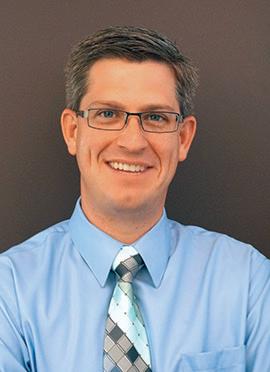


Supreme Court decision provides reprieve for homeless
BY THEO WELLS-SPACKMAN VTDigger
A citizen panel’s decision, which challenged the state’s view of the motel program’s 80-day limit and caused a rush of appeals, will stand for now after a Vermont Supreme Court order last week.
The order is part of an ongoing case examining how the limit is enforced, and will likely allow many vulnerable households to remain sheltered, or regain access to housing for the time being, advocates said.


The state’s motel voucher program, which has constricted throughout the last two years despite increases in unsheltered homelessness, provides temporary housing for people without other financial resources who are in particularly vulnerable situations.
The Human Services Board concluded last month that the state’s Department for Children and Families had incorrectly enforced the motel program’s 80-day limit for a petitioner referred to as “H.D.” The central point of contention was whether the department could consider a participant’s use of the program in the previous fiscal year — before July 1, 2025 — when reviewing their application.
The department, which believes that a “rolling,” or retrospective, calendar is the correct approach by law, appealed the decision to the Vermont Supreme Court in a case that is still pending.
Since the August decision, more than 215 households have appealed their emergency housing cases to the Human Services Board, in addition to “numerous” cases which
were already pending, according to the board’s chief hearing officer Joe Reinert. While the Department for Children and Families claimed the board’s decision would result in an unlawful use of taxpayer money, advocates said the state budget supports the board’s interpretation, which would provide important respite to people in need.
In last week’s order, the Supreme Court declined to suspend the Human Services Board’s decision as these hearings move forward. Both sides of the argument are “rooted in conceivable analyses,” read the court’s decision, and therefore the state “has not met its burden” for its motion to be granted.
This allows the board to continue using its previous decision as an informal precedent, according to Vermont Legal Aid staff attorney Maryellen Griffin. So far, her organization’s clients under similar circumstances to “H.D.” have had positive initial rulings. Many have been granted “benefits pending appeal,” allowing medically vulnerable people and children back indoors while their case is decided, Griffin said.
“We are definitely having
trouble keeping up with demand,” Griffin said, adding that eligible people can also appeal their denial themselves when possible.
DCF officials declined to comment, but the state’s Sept. 9 motion, filed by the Attorney General’s office, said that the board’s decision would allow taxpayer dollars to be “misspent,” and cause confusion in the administration of the program.
“The Hearing Officers overseeing HSB cases have continued to overturn DCF decisions related to the interpretation of the 80-day cap,” read the motion, adding that the board’s decision last month “fundamentally contravenes law.”
In addition to incurring added costs of up to $2.1 million, the department estimated, the decision would likely cause the motel program to become full too quickly. Advocates have countered that the program appears to be well below its 1,100-room maximum as of Sept. 29.
“They have the resources,” said End Homelessness Vermont Executive Director Brenda Siegel, adding that the department’s motion “would have caused a lot of harm.”
up for Weatherization Wednesdays!
• October 1: How to use home energy tax credits before they expire
• October 8: Is it time to (re)insulate your attic and basement?
• October 15: Why heating your home isn’t as simple as you may think
• October 22: How to button up your home
• October 29: Demystifying heat pumps

at ButtonUpVermont.org/events



FAMILY PROGRAMS
VOLLEYBALL COURTS
The volleyball courts at Village Community Park have been updated with steel standards and new nets. Check them out and enjoy playing.
SOUND BATH WITH SOUND MASSAGE
Lie down, relax and allow the sounds and vibrations of crystal bowls, gongs and flutes to calm the body and mind while Tibetan singing bowls are gently rung and run on the body if you choose. Rise from this deep restorative rest feeling refreshed and recharged. Instructor: Kirk Jones. Tuesday, Oct. 7, 6-7 p.m.
DANGEROUS GIRLS
Ages 12-plus. This women-only cardio-kickboxing class combines strength and conditioning with practical combat skills. Learn trips and throws, bounce to Beyoncé, hit hard, laugh a lot. Instructor: ONTA Studio staff. Wednesdays, Oct. 8-29, 6:30-7:30 p.m.
ADULT PROGRAMS
SENIOR COMMUNITY MEALS
Ages 60-plus. The Recreation Department and Age Well will offer a free meal every Tuesday from 12–12:30 p.m. for anyone aged 60-plus and their spouse, regardless of age. Pre-registration is required, and spots are limited. Check-in begins at 11:30 a.m. with meals served at noon. Following lunch, enjoy a free senior-focused program from 12:30–1:30 p.m. Check out the meal menu on the recreation website, willstonrec. org. Location: the R.E.C. Zone, 94 Harvest Lane.
ALZHEIMER’S AND DEMENTIA EDUCATION
The Alzheimer’s Association provides care and support to
those affected by Alzheimer’s and all other dementia through free, high-quality education programs. Explore convenient learning opportunities focused on Alzheimer’s disease, caregiving, communication and more. Thursday, Oct. 23, 6-7 p.m.
ESTATE PLANNING SEMINAR
Join attorney Lisa Companion of LMC Law to learn about how you can transfer and protect your assets in this estate planning educational seminar. Discussion will include wills, trusts, power of attorney, and living wills, as well as mistakes you should avoid while protecting you and your loved ones. Thursday, Oct. 16, 5-6 p.m.
PICKUP PROGRAMS
Come out and play, stay fit and meet new people. These programs are open to all experience levels, meeting once a week October through May. Register at www. willistonrec.org.
Basketball: There are programs for men 20-plus, men 30plus and women 19-plus.
— Table Tennis: adults 18plus. Players should bring their own paddles (a limited number of loaner paddles are available).
— Volleyball: adults 18-plus.
JAZZERCISE CARDIO SCULPT
Instructors will show you how to take it high or low.
Cardio Sculpt Low, Tuesdays and Fridays, 8:30-9:30 a.m. and Mondays and Wednesdays, 11
a.m.-12 p.m. Cardio Sculpt High, Tuesdays and Wednesdays, 4:455:45 p.m. and Sundays, 8:30-9:30 a.m. Instructor: Kit Sayers.
R.E.C. ZONE FITNESS PROGRAMS
Ongoing fitness programs held at the R.E.C. Zone, 94 Harvest Lane
TAI CHI INTRO
Ages 50-plus. Mondays, 9:3010:30 a.m. Free. Instructor: Adina Panitch.
BONE BUILDERS
Ages 50-plus, Tuesdays and Thursdays, 10-11 a.m. Free. Instructors: Ann Naumann and Joyce Oughstun.
SENIOR STRENGTH & FUNCTIONAL MOBILITY
Ages 50-plus. Wednesdays and Fridays, 10-10:45 a.m. free. Instructor: Jazmine Averbuck.
ZUMBA GOLD
Ages 18-plus. Thursdays, 8:459:45 a.m. free. Instructor: Ciara Gregory.
YOUTH PROGRAMS
HOOPLA AND SENSORY PLAY FOR FAMILIES
A joyful movement class where tots and caregivers play, move and explore together. Designed for children ages 5 and younger to experience with their grownups. This class blends beginner hooping, music-led movement and hands-on sensory play to support connection and healthy movement for all bodies. Instructor: Ms. Karla. Thursday, Oct. 23, 9-10 a.m.
GOBLIN AND GHOUL GOURMET COOKING
Ages 8-16. Young chefs will whip up a variety of spooky sweet and savory treats while learning real kitchen skills they can use for a lifetime. From creepy creations to festive bites, this handson class blends creativity, confidence-building and fun, all with a spooky twist. Instructor: Lynn Brown. Thursday, Oct. 23, 1-4:30 p.m.
KNITTING
Grades 3-8. Does your child love to knit, or do they want to learn? This program offers the basics for first-timers, as well as providing early and intermediate knitters with specific how-to and help with projects. All materials are provided. Instructor: Christine Heavner, owner of Knitting Circle. Wednesdays, Oct. 8-29, 2-3:15 p.m.
NINJA KIDS INTRO
Ages 4-8, 7-11 and 9-15. This play-based curriculum increases strength and self-confidence, while moving meditation helps children manage their emotions and develop the connection between mental and physical well-being. Programs begin the week of Jan. 7, various days and times. $95. Instructor: ONTA Studio Staff.



Job Open in the
Town of St. George
The town of St. George in Chittenden County is seeking to hire a parttime Assistant Town Clerk/ Assistant to the Boards. The position will directly support the work of our Town Clerk and the various Town Boards, who keep things running on behalf of our small but dynamic community. Ideal candidates will have attention to detail, be good at working with people, and be able to handle a variety of tasks.
For more information, please see the job postings on the Town website here: https:// bit.ly/StGeorgeJobs.
To apply, please email a cover letter and your resume to: SBViceChair@stgeorgevt. com.
The jobs are open until filled; priority consideration will be given to applications received before Monday, October 6, 2025.
CLASSIFIEDS

MISSING
LOST CAT — two-year-old graystriped tabby, Lucy, went missing Aug. 9 from Chelsea Place in Williston. She is very shy and skittish. Please call 802-2384488 with any information.
LEGAL
TOWN OF SAINT GEORGE DEVELOPMENT REVIEW BOARD NOTICE OF PUBLIC HEARING
Wednesday, October 22, 2025 6:00 P.M.
The Development Review Board will convene a public hearing at 6:00 P.M. on Wednesday, October 22, 2025, in accordance with the provisions of §3.03 and §7.10 of the Town’s Land Use Regulations and 24 V.S.A. §4460(e)(12) to consider a Boundary Line Adjustment Application from Luke Bergeron. The application involves the addition of 4 acres to Luke Bergeron’s property, and the deduction of 4 acres from Eugene and Inez O’Brien’s property.
Join Zoom Meeting https://us06web.zoom.us/j/85786269072
Meeting ID: 857 8626 9072
Dial by your location
• +1 646 931 3860 US
• +1 929 205 6099 US (New York)
The application is available for inspection at the Town Clerk’s office by appointment.
Please contact Town Clerk, Lisa Laramee, at townclerk@stgeorgevt.com or 802482-5272 for an appointment. To submit written testimony, please contact Acting Zoning Administrator Maya Holmes, at zoning@stgeorgevt.com.
Participation in the hearing is necessary to establish status as an ‘interested person’ and the right to appeal a decision rendered in that hearing, according to the provisions of 24 V.S.A. 117 §§4465(b) and 4471(a).
Participation consists of offering, through oral or written testimony, evidence or a statement of concern directly related to the subject of the hearing.

Aug. 24 at 8:21 p.m. — Assisted Williston rescue with an unresponsive male. Male was transported to the hospital for evaluation.
Aug. 24 at 11:11 p.m. — Reports of gunfire. Officer drove through the area and did not hear anything.
Aug. 25 at 7:09 a.m. — Death investigation. Nothing suspicious.
Aug. 25 at 8:05 p.m. — Report of a disturbance in the Home Depot parking lot. Male was issued a citation to appear in court for suspicion of DUI.
Aug. 26 at 12:24 p.m. — Assisted Berlin City with trespassing a male who was refusing to leave.
Aug. 26 at 1:34 p.m. — Stolen camper recovered and returned back to Pete’s RV. Aug. 26 at 4:49 p.m. — Report of a
woman screaming on Williston Road. Female was located; she was singing with headphones on.
Aug. 26 at 6:01 p.m. — Disturbance report at Zephyr Place. Parties were separated.
Aug. 27 at 4:38 p.m. — Assisted driver with flat tire.
Aug. 27 at 9:13 p.m. — Suspicious male on Hurricane Lane. Male was gone before officer’s arrival.
Aug. 28 at 6:29 a.m. — Assisted Williston Rescue with an unresponsive male. Male was transported to the hospital for evaluation.
Aug. 28 at 9:10 a.m. — Assisted Sonesta with trespassing individuals from their property.
Aug. 28 at 11:06 p.m. — Disturbance reported at Zephyr Place. Parties were
separated.
Aug. 29 at 2:39 p.m. — Retail theft reported at Walmart. Officers were unable to locate suspect.
Aug. 29 at 3:44 p.m. — Assisted with male having a mental health crisis at Zephyr Place.
Aug. 29 at 10:10 p.m. — Caller reported sounds of gunfire. Officers checked the area and did not locate anything.
Aug. 30 at 9:41 a.m. — Report of an unattended child in a van on Harvest Lane. Officers responded; there was an adult also sitting in the vehicle in the back.
Aug. 30 at 12:18 p.m. — Assisted Synergy Fitness with trespassing person who was threatening staff.
Aug. 30 at 10:24 p.m. — Assisted Essex Police with a fight involving 10 people.
Officers also conducted 24 traffic stops and responded to eight alarm activations and 14 motor vehicle crashes.









































Rabies is a deadly viral disease of the brain that infects mammals. It is most often seen in raccoons, skunks, foxes, and bats, but unvaccinated pets and livestock can also get rabies. The virus is spread through the bite of an infected animal or contact with its





Given’ their all in volleyball




